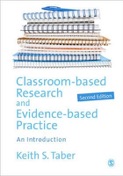Educational Research Methods

A site to support teaching and learning...

Qualitative data analysis
“The authors state an assertion, give some initial interpretation of the quote, offer a teacher quote, and then give more interpretation of the quote. First, the authors' interpretations seem to be more far-reaching than the content of the teacher quotes. I found myself reading and re-reading the teacher quotes, and then reading and re-reading the interpretation of each quote, and then asking myself, "Is that really what the teacher is trying to say here?" Again, I know that a "member checking" process was implemented; however, some of the interpretations seem so far-reaching that it makes me question the validity of the assertions.”
Critical comment from a peer review report of an article submitted for publication
Once data has been collected, it needs to be analysed. The nature of data analysis is different in interpretivist studies working with qualitative data, and confirmatory research working with quantitive data.
“Sometimes qualitative research means something other than just doing research which collects and analyses qualitative data, but rather refers to the nature of the interpretive process and ‘interpretative ways of knowing’ (Piantanida & Garman, 2009, p.xviii)” (Taber 2012)
Taber, K. S. (2012). Prioritising paradigms, mixing methods, and characterising the 'qualitative' in educational research. Teacher Development, 16(1), 125-138. doi: 10.1080/13664530.2012.674294
Piantanida, M., & Garman, N. B. (2009). The Qualitative Dissertation: A guide for students and faculty (2nd ed.). Thousand Oaks, California: Corwin Press.
Patton (2002) refers to authors who have talked of the
-
•art of case study,
-
•the centrality of telling a story, or
-
•improvising a song, or
-
•producing portraiture, or
-
•choreography of analysis...
“...we mold [sic, mould] interviews, observations, documents, and field notes into findings” (p.432).
Patton, M. Q. (2002). Qualitative Research and Evaluation Methods (3rd ed.). Thousand Oaks, California: Sage.
However, not all research with qualitative data is understood in these ways - sometimes qualitative data leads to numerical or even statistical findings! So not all research working with qualitative data is ‘Qualitative research’ in the way that term is often understood.
The need for careful planning of data analysis:
“the analysis of data needs to be planned, just as much as the collection of data. It can also consume a significant proportion of the time available for a project, and the research schedule needs to allow for this in view of when any report needs to be completed” (Taber, 2013)
Paton warns that:
“Qualitative analysis transforms data into findings. No formula exist for that transformation.”
and suggests that
"The challenge of qualitative analysis lies in making sense of massive amounts of data. This involves reducing the volume of raw information, sifting trivia from significance, identifying significant patterns, and constructing a framework for communicating the essence of what the data reveal.”
(Patton, 2002: 432)
Robson warns:
“Naïve researchers may be injured by unforeseen problems with qualitative data. This can occur at the collection stage, where overload is a constant danger.” (Robson, 2002: 456)
When analysing data in interpretivist research it is important to immerse oneself in the data - but to avoid ‘drowning’ in it!
There are various approaches to qualitative data analysis
This is a personal site of Keith S. Taber to support teaching of educational research methods.
(Dr Keith Taber is Professor of Science Education at the University of Cambridge.)
2016
Taber, K. S. (2013). Classroom-based Research and Evidence-based Practice: An introduction (2nd ed.). London: Sage.
